As we did with last year’s offseason trades and the in-season swaps from 2019/20, Hoops Rumors will be keeping track of all of the trades made this offseason, right up until the start of the 2020/21 season, updating this post with each transaction.
Trades are listed here in reverse chronological order, with the latest on top. So, if a player has been traded multiple times, the first team listed as having acquired him is the one that ended up with him. If a trade has not yet been formally finalized, it will be listed in italics.
For our full story on each trade, click on the date above it. For more information on the specific conditions dictating if and when draft picks involved in these deals will actually change hands, be sure to check out RealGM.com’s breakdown of the details on traded picks. We’ll continue to update this list with the latest specific details on picks and other compensation, as they’re reported.
Here’s the full list of the NBA’s 2020 offseason trades:
- Sixers acquire Danny Green, Terrance Ferguson, and Vincent Poirier.
- Thunder acquire Al Horford, the draft rights to Theo Maledon (No. 34 pick), the Sixers’ 2025 first-round pick (top-six protected), the draft rights to Vasilije Micic.
- Note: If the Sixers’ 2025 first-round pick isn’t conveyed in 2025, 2026, or 2027, the Thunder will instead receive the Sixers’ 2027 second-round pick and cash ($2MM).
- Wizards acquire Russell Westbrook.
- Rockets acquire John Wall and the Wizards’ 2023 first-round pick (top-14 protected).
- Hornets acquire Gordon Hayward (sign-and-trade), the Celtics’ 2023 second-round pick, and the Celtics’ 2024 second-round pick.
- Celtics acquire the Hornets’ 2022 second-round pick (top-55 protected).
- Thunder acquire Trevor Ariza, Justin Jackson, either the Mavericks’ or Heat’s 2023 second-round pick (whichever is more favorable), and the Mavericks’ 2026 second-round pick.
- Pistons acquire Delon Wright.
- Mavericks acquire James Johnson.
- Cavaliers acquire Rayjon Tucker and the Jazz’s 2027 second-round pick.
- Jazz acquire cash ($2MM).
- Knicks acquire Austin Rivers, the draft rights to Sergio Llull, the draft rights to Tadija Dragicevic, and the draft rights to Axel Hervelle.
- Rockets acquire the draft rights to Issuf Sanon.
- Thunder acquire T.J. Leaf and the Pacers’ 2027 second-round pick.
- Pacers acquire Jalen Lecque.
- Rockets acquire the draft rights to KJ Martin (No. 52 pick).
- Kings acquire the Lakers’ 2021 second-round pick and cash ($1MM).
- Hawks acquire Danilo Gallinari (sign-and-trade) and cash ($750K).
- Thunder acquire the Hawks’ 2025 second-round pick (top-55 protected).
- Timberwolves acquire Ed Davis.
- Knicks acquire Jacob Evans, Omari Spellman, and the Timberwolves’ 2026 second-round pick.
- Pistons acquire Trevor Ariza, the draft rights to Isaiah Stewart (No. 16 pick), a future Rockets second-round pick, and cash ($4.6MM)
- Rockets acquire Christian Wood (sign-and-trade), the Pistons’ 2021 first-round pick (top-16 protected) and the Lakers’ 2021 second-round pick.
- Bucks acquire Jrue Holiday and the draft rights to Sam Merrill (No. 60 pick; from Pelicans).
- Pelicans acquire Steven Adams, Eric Bledsoe, the Bucks’ 2025 first-round pick (unprotected), the Bucks’ 2027 first-round pick (unprotected), and the right to swap first-round picks with the Bucks in 2024 and 2026.
- Thunder acquire George Hill, Darius Miller, Kenrich Williams (sign-and-trade), Josh Gray (sign-and-trade), Zylan Cheatham (sign-and-trade), the Nuggets’ 2023 first-round pick (top-14 protected), the Wizards’ 2023 second-round pick (from Pelicans), and the Hornets’ 2024 second-round pick (from Pelicans).
- Nuggets acquire the draft rights to RJ Hampton (No. 24 pick; from Bucks).
- Cavaliers acquire the Bucks’ 2025 second-round pick.
- Bucks acquire the draft rights to Ilkan Karaman.
- Note: The protections on the Bucks’ 2022 first-round pick owed to the Cavaliers have been removed as part of this trade. That pick is now unprotected.
- Cavaliers acquire JaVale McGee and the Lakers’ 2026 second-round pick.
- Lakers acquire Alfonzo McKinnie and Jordan Bell.
- Pistons acquire Zhaire Smith.
- Sixers acquire Tony Bradley.
- Knicks acquire Ed Davis, the Jazz’s 2023 second-round pick, and either the Jazz’s or Cavaliers’ 2024 second-round pick (whichever is more favorable)
- Jazz acquire cash ($110K).
- Pistons acquire Jerami Grant (sign-and-trade) and the draft rights to Nikola Radicevic.
- Nuggets acquire cash ($110K).
- Pistons acquire Tony Bradley and the draft rights to Saben Lee (No. 38 pick).
- Jazz acquire cash ($250K).
- Warriors acquire Kelly Oubre.
- Thunder acquire the Warriors’ 2021 first-round pick (top-20 protected) and the Nuggets’ 2021 second-round pick.
- Note: If the Warriors’ pick doesn’t convey in 2021, the Thunder will instead receive the Timberwolves’ 2021 second-round pick.
- Trail Blazers acquire Robert Covington.
- Rockets acquire Trevor Ariza, the draft rights to Isaiah Stewart (No. 16 pick), and the Trail Blazers’ 2021 first-round pick (top-14 protected).
- Trail Blazers acquire Enes Kanter and cash ($1MM; from Grizzlies).
- Grizzlies acquire Mario Hezonja and the draft rights to Desmond Bane (No. 30 pick).
- Celtics acquire the Grizzlies’ 2025 second-round pick and either the Rockets’ 2023 second-round pick or the lesser of the Mavericks’ and Grizzlies’ 2023 second-round picks (whichever is more favorable).
- Timberwolves acquire the draft rights to Leandro Bolmaro (No. 23 pick).
- Knicks acquire the draft rights to Immanuel Quickley (No. 25 pick), the Pistons’ 2023 second-round pick, and the draft rights to Mathias Lessort.
- Timberwolves acquire Ricky Rubio, the draft rights to Immanuel Quickley (No. 25 pick), and the draft rights to Jaden McDaniels (No. 28 pick).
- Thunder acquire James Johnson, the draft rights to Aleksej Pokusevski (No. 17 pick), and the Timberwolves’ 2024 second-round pick.
- Pistons acquire Dewayne Dedmon.
- Hawks acquire Tony Snell and Khyri Thomas.
- Note: The Hawks immediately waived Thomas.
- Clippers acquire the draft rights to Daniel Oturu (No. 33 pick).
- Timberwolves acquire the Pistons’ 2023 second-round pick and the draft rights to Mathias Lessort.
- Nets acquire Landry Shamet, Bruce Brown, and the draft rights to Reggie Perry (No. 57 pick).
- Clippers acquire Luke Kennard, Justin Patton, the draft rights to Jay Scrubb (No. 55 pick), the Trail Blazers’ 2023 second-round pick (from Pistons), the Pistons’ 2024 second-round pick, the Pistons’ 2025 second-round pick, and the Pistons’ 2026 second-round pick.
- Pistons acquire Dzanan Musa, Rodney McGruder, the draft rights to Saddiq Bey (No. 19 pick), the draft rights to Jaylen Hands, the Raptors’ 2021 second-round pick (from Nets), and cash (from Clippers).
- Thunder acquire Vincent Poirier and cash ($1MM).
- Celtics acquire the Thunder’s 2021 second-round pick (top-55 protected).
- Thunder acquire Admiral Schofield and the draft rights to Vit Krejci (No. 37 pick).
- Wizards acquire the draft rights to Cassius Winston (No. 53 pick) and the Grizzlies’ 2024 second-round pick.
- Grizzlies acquire the draft rights to Xavier Tillman (No. 35 pick).
- Kings acquire the draft rights to Robert Woodard (No. 40 pick) and either the Bulls’ or Pistons’ 2022 second-round pick (whichever is least favorable).
- Jazz acquire the draft rights to Elijah Hughes (No. 39 pick).
- Pelicans acquire the Jazz’s 2022 second-round pick.
- Hornets acquire the draft rights to Nick Richards (No. 42 pick).
- Pelicans acquire the Hornets’ 2024 second-round pick.
- Mavericks acquire Josh Richardson and the draft rights to Tyler Bey (No. 36 pick).
- Sixers acquire Seth Curry.
- Lakers acquire Dennis Schröder.
- Thunder acquire Danny Green and the draft rights to Jaden McDaniels (No. 28 pick).
- Bucks acquire the No. 45 pick in the 2020 draft.
- Magic acquire the Pacers’ second-round pick in either 2022, 2023, or 2024 and the Bucks’ 2026 second-round pick.
- Note: The Magic will acquire the Pacers’ second-round pick one year after the Pacers send a second-rounder to the Nets. That pick owed to the Nets has 45-60 protection in 2021, 45-60 protection in 2022, and is unprotected in 2023.
- Knicks acquire the No. 23 pick in the 2020 draft and the draft rights to Ante Tomic.
- Jazz acquire the No. 27 pick in the 2020 draft and the No. 38 pick in the 2020 draft.
- Suns acquire Chris Paul and Abdel Nader.
- Thunder acquire Ricky Rubio, Kelly Oubre, Ty Jerome, Jalen Lecque, and the Suns’ 2022 first-round pick (top-12 protected).
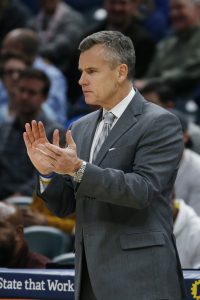
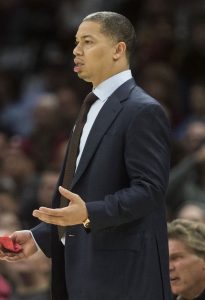
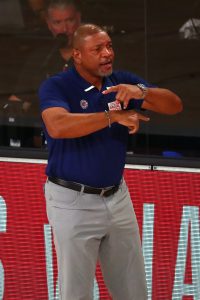
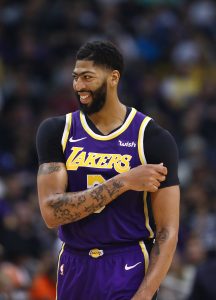
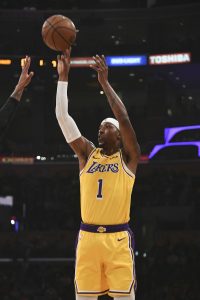 It’s hard to pin down exactly how much KCP’s and Rondo’s next contracts will be worth. I don’t expect major bidding wars on too many free agents this fall, but rival teams might want to put pressure on the defending champions by making aggressive offers for the Lakers’ most important free agents.
It’s hard to pin down exactly how much KCP’s and Rondo’s next contracts will be worth. I don’t expect major bidding wars on too many free agents this fall, but rival teams might want to put pressure on the defending champions by making aggressive offers for the Lakers’ most important free agents.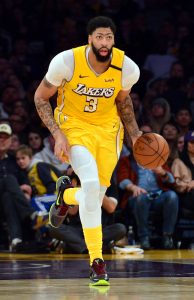 We’ll likely soon be able to apply these numbers to contracts for free agents
We’ll likely soon be able to apply these numbers to contracts for free agents 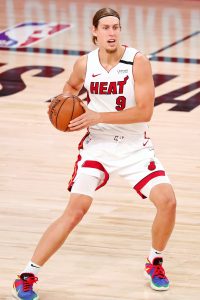
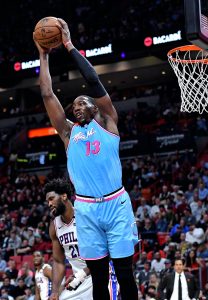 Coming off an impressive breakout season, Adebayo will be eligible later this month to sign a rookie scale extension which goes into effect in 2021/22. For players like Adebayo, who have already earned an All-Star nod and are likely to continue improving, a maximum-salary extension is virtually automatic. Teams prefer to get that business done as soon as they can, keeping their young stars happy and avoiding the possibility of an offer sheet in restricted free agency, so negotiations are usually quick and painless.
Coming off an impressive breakout season, Adebayo will be eligible later this month to sign a rookie scale extension which goes into effect in 2021/22. For players like Adebayo, who have already earned an All-Star nod and are likely to continue improving, a maximum-salary extension is virtually automatic. Teams prefer to get that business done as soon as they can, keeping their young stars happy and avoiding the possibility of an offer sheet in restricted free agency, so negotiations are usually quick and painless.